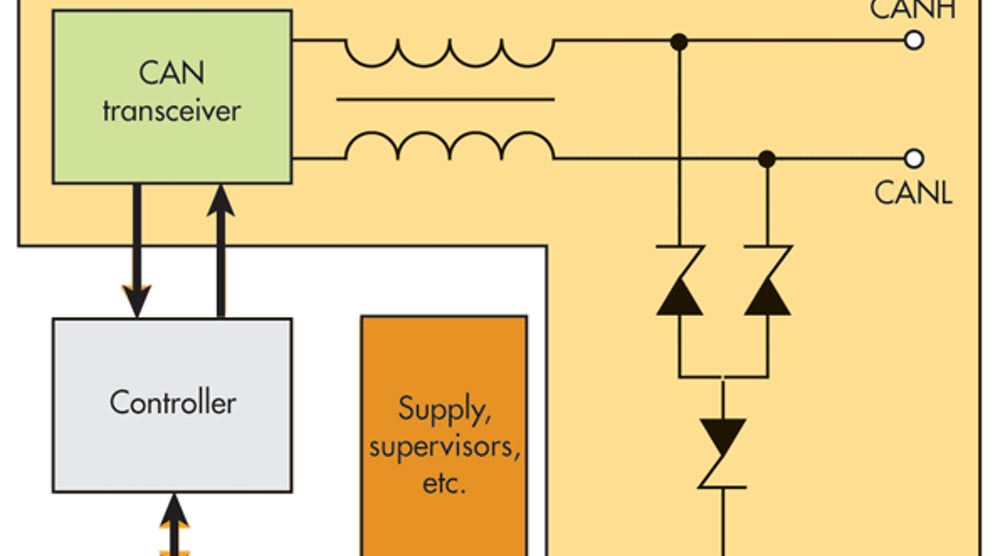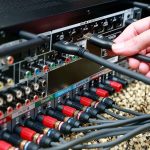Bandwidth, in electronics, the range of frequencies occupied by a modulated radio-frequency signal, usually given in hertz (cycles per second) or as a percentage of the radio frequency. For example, an AM (amplitude modulation) broadcasting station operating at 1,000,000 hertz has a bandwidth of 10,000 hertz, or 1 percent (10,000/1,000,000). The term also designates the frequency range that an electronic device, such as an amplifier or filter, will transmit.
Electronics
Electronics, branch of physics and electrical engineering that deals with the emission, behaviour, and effects of electrons and with electronic devices.
The term originally was applied to the study of electron behaviour and movement, particularly as observed in the first electron tubes. It came to be used in its broader sense with advances in knowledge about the fundamental nature of electrons and about the way in which the motion of these particles could be utilized. Today many scientific and technical disciplines deal with different aspects of electronics. Research in these fields has led to the development of such key devices as transistors, integrated circuits, lasers, and optical fibres. These in turn have made it possible to manufacture a wide array of electronic consumer, industrial, and military products. Indeed, it can be said that the world is in the midst of an electronic revolution at least as significant as the industrial revolution of the 19th century.
This article reviews the historical development of electronics, highlighting major discoveries and advances. It also describes some key electronic functions and the manner in which various devices carry out these functions.

The History of Electronics
The vacuum tube era
Theoretical and experimental studies of electricity during the 18th and 19th centuries led to the development of the first electrical machines and the beginning of the widespread use of electricity. The history of electronics began to evolve separately from that of electricity late in the 19th century with the identification of the electron by the English physicist Sir Joseph John Thomson and the measurement of its electric charge by the American physicist Robert A. Millikan in 1909.
At the time of Thomson’s work, the American inventor Thomas A. Edison had observed a bluish glow in some of his early lightbulbs under certain conditions and found that a current would flow from one electrode in the lamp to another if the second one (anode) were made positively charged with respect to the first (cathode). Work by Thomson and his students and by the English engineer John Ambrose Fleming revealed that this so-called Edison effect was the result of the emission of electrons from the cathode, the hot filament in the lamp. The motion of the electrons to the anode, a metal plate, constituted an electric current that would not exist if the anode were negatively charged.
This discovery provided impetus for the development of electron tubes, including an improved X-ray tube by the American engineer William D. Coolidge and Fleming’s thermionic valve (a two-electrode vacuum tube) for use in radio receivers. The detection of a radio signal, which is a very high-frequency alternating current (AC), requires that the signal be rectified; i.e., the alternating current must be converted into a direct current (DC) by a device that conducts only when the signal has one polarity but not when it has the other—precisely what Fleming’s valve (patented in 1904) did. Previously, radio signals were detected by various empirically developed devices such as the “cat whisker” detector, which was composed of a fine wire (the whisker) in delicate contact with the surface of a natural crystal of lead sulfide (galena) or some other semiconductor material. These devices were undependable, lacked sufficient sensitivity, and required constant adjustment of the whisker-to-crystal contact to produce the desired result. Yet these were the forerunners of today’s solid-state devices. The fact that crystal rectifiers worked at all encouraged scientists to continue studying them and gradually to obtain the fundamental understanding of the electrical properties of semiconducting materials necessary to permit the invention of the transistor.
In 1906 Lee De Forest, an American engineer, developed a type of vacuum tube that was capable of amplifying radio signals. De Forest added a grid of fine wire between the cathode and anode of the two-electrode thermionic valve constructed by Fleming. The new device, which De Forest dubbed the Audion (patented in 1907), was thus a three-electrode vacuum tube. In operation, the anode in such a vacuum tube is given a positive potential (positively biased) with respect to the cathode, while the grid is negatively biased. A large negative bias on the grid prevents any electrons emitted from the cathode from reaching the anode; however, because the grid is largely open space, a less negative bias permits some electrons to pass through it and reach the anode. Small variations in the grid potential can thus control large amounts of anode current.
The vacuum tube permitted the development of radio broadcasting, long-distance telephony, television, and the first electronic digital computers. These early electronic computers were, in fact, the largest vacuum-tube systems ever built. Perhaps the best-known representative is the ENIAC (Electronic Numerical Integrator and Computer), completed in 1946.
The special requirements of the many different applications of vacuum tubes led to numerous improvements, enabling them to handle large amounts of power, operate at very high frequencies, have greater than average reliability, or be made very compact (the size of a thimble). The cathode-ray tube, originally developed for displaying electrical waveforms on a screen for engineering measurements, evolved into the television picture tube. Such tubes operate by forming the electrons emitted from the cathode into a thin beam that impinges on a fluorescent screen at the end of the tube. The screen emits light that can be viewed from outside the tube. Deflecting the electron beam causes patterns of light to be produced on the screen, creating the desired optical images.
Notwithstanding the remarkable success of solid-state devices in most electronic applications, there are certain specialized functions that only vacuum tubes can perform. These usually involve operation at extremes of power or frequency.
Vacuum tubes are fragile and ultimately wear out in service. Failure occurs in normal usage either from the effects of repeated heating and cooling as equipment is switched on and off (thermal fatigue), which ultimately causes a physical fracture in some part of the interior structure of the tube, or from degradation of the properties of the cathode by residual gases in the tube. Vacuum tubes also take time (from a few seconds to several minutes) to “warm up” to operating temperature—an inconvenience at best and in some cases a serious limitation to their use. These shortcomings motivated scientists at Bell Laboratories to seek an alternative to the vacuum tube and led to the development of the transistor.


